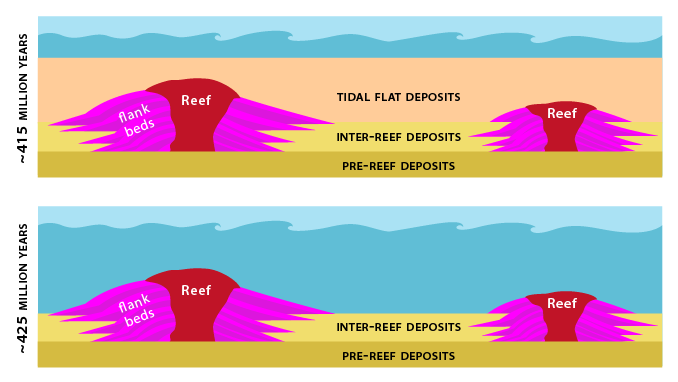 Diagram showing reefs being buried.
Diagram showing reefs being buried.
Reefs have formed in the earth's seas for the past 550 million years. On these pages, we take a brief look at the geologic history of reefs and suggest what this history might tell us about the future of the reefs that exist today. Reefs died in the Great Lakes region near the end of the Silurian because of local environmental change. The sea shallowed to become a tidal flat, and sediments were exposed to the air during low tide. These tidal-flat deposits buried the reefs. The salinity of this sea also increased and salt deposits formed. These conditions could not be tolerated by stromatoporoids, corals, and many other organisms, and reef growth ended. This demise was not part of an extinction event. Stromatoporoid-coral reefs continued to thrive in many other parts of the world where environmental conditions were favorable.

